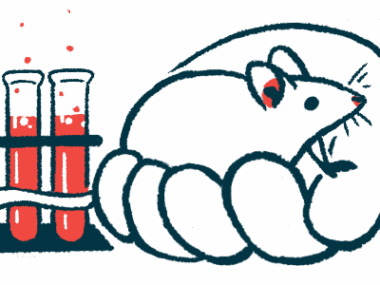AIP patients’ high sugar and fat diet leads to metabolic problems: Study
Consuming more glucose can reduce heme-producing pathway activity
Written by |

People with acute intermittent porphyria (AIP) often consume large amounts of simple sugars and fats, which may contribute to metabolic problems, such as being overweight or having high levels of bad cholesterol in their blood, a study reports.
“Our study provided valuable insights into the metabolic aspects of AIP, revealing improper dietary habits that may predispose patients to additional pathologies [health problems],” the researchers wrote. The study, “Nutrition and rare diseases: a case study of patients with acute intermittent porphyria (AIP),” was published in Nutrition & Metabolism.
AIP is the most common type of porphyria, all the forms of which have problems producing heme, a molecule that helps transport oxygen in the body. Due to heme production problems, intermediary molecules called porphyrins and other heme precursors build up to toxic levels, driving porphyria symptoms.
The biochemical pathway that produces heme is regulated in part by glucose, a simple sugar in different foods that’s used as the body’s main source of energy. Consuming larger amounts of glucose can reduce the activity of the heme-producing pathway. In people with AIP, this means increasing glucose intake can help prevent the production of heme precursors, thereby limiting symptoms.
Because eating more glucose can help control disease manifestations, some people with AIP alter their diet to increase the ingestion of simple sugars. This can help manage AIP, but may set the stage for nutritional and metabolic problems.
Diet and health impacts in AIP
Here, scientists in Italy studied the dietary patterns and the impact of diet on the health of 16 female AIP patients.
Almost all the patients (87.5%) reported unusually high intake of simple sugars like glucose, and 81% said they had sudden cravings to consume sugar in the form of sweets and a frequent need to eat sweets to avoid or prevent pain. Also, 75% consumed large amounts of fat, particularly saturated fat. Consumption of other nutrients was generally within typical ranges for most, but a few said they ate an unusually low amount of protein in the form of animal products.
“Our findings suggest that AIP patients experience nutritional imbalances and malnutrition characterized by an overconsumption of simple sugars and saturated fats,” the researchers wrote.
Half the patients were classified as overweight, based on body mass index (BMI), which is a ratio of weight to height. Measures of waist circumference and other body fat assessments also were higher than normal for about half of them.
“Many patients in this study were overweight, which is unusual compared to the average Italian female population, adjusted for age and sex,” the researchers wrote. “Our findings suggested that this condition may be linked to an improper diet.”
Blood sample analyses also showed that 50% of the patients had abnormally high levels of low-density lipoprotein (LDL) cholesterol, commonly referred to as bad cholesterol because high levels are associated with an increased risk of cardiovascular problems.
“These dietary habits contribute to an increase in fat mass and BMI, which are detectable during routine clinical assessments. This is further reflected in the altered lipid [fat] profile observed at the biochemical level, supporting the hypothesis that frequent glucose consumption in the form of sweets acts as a compensatory behavior to manage symptoms,” wrote the researchers, who said their study was limited by the small number of patients included.






